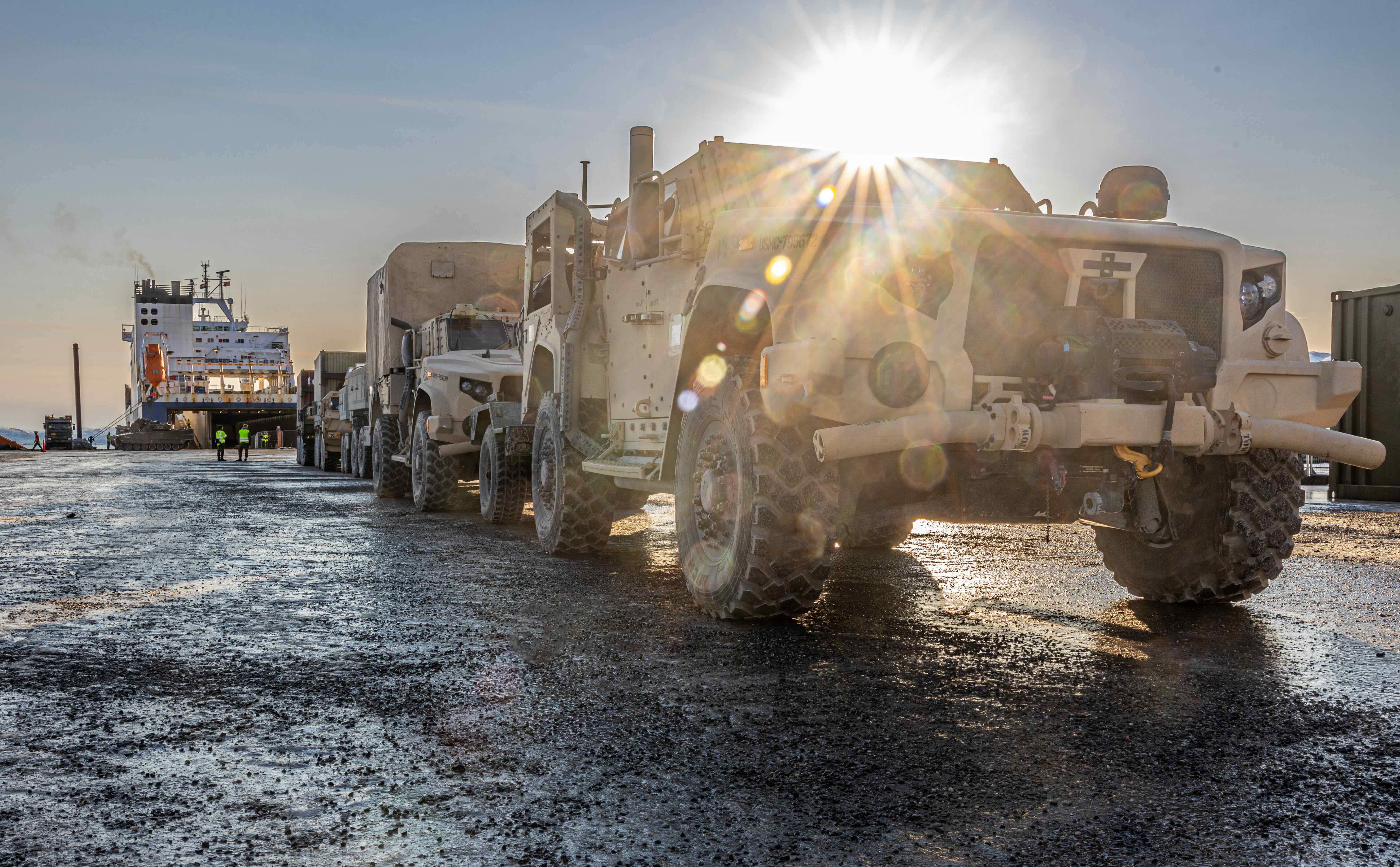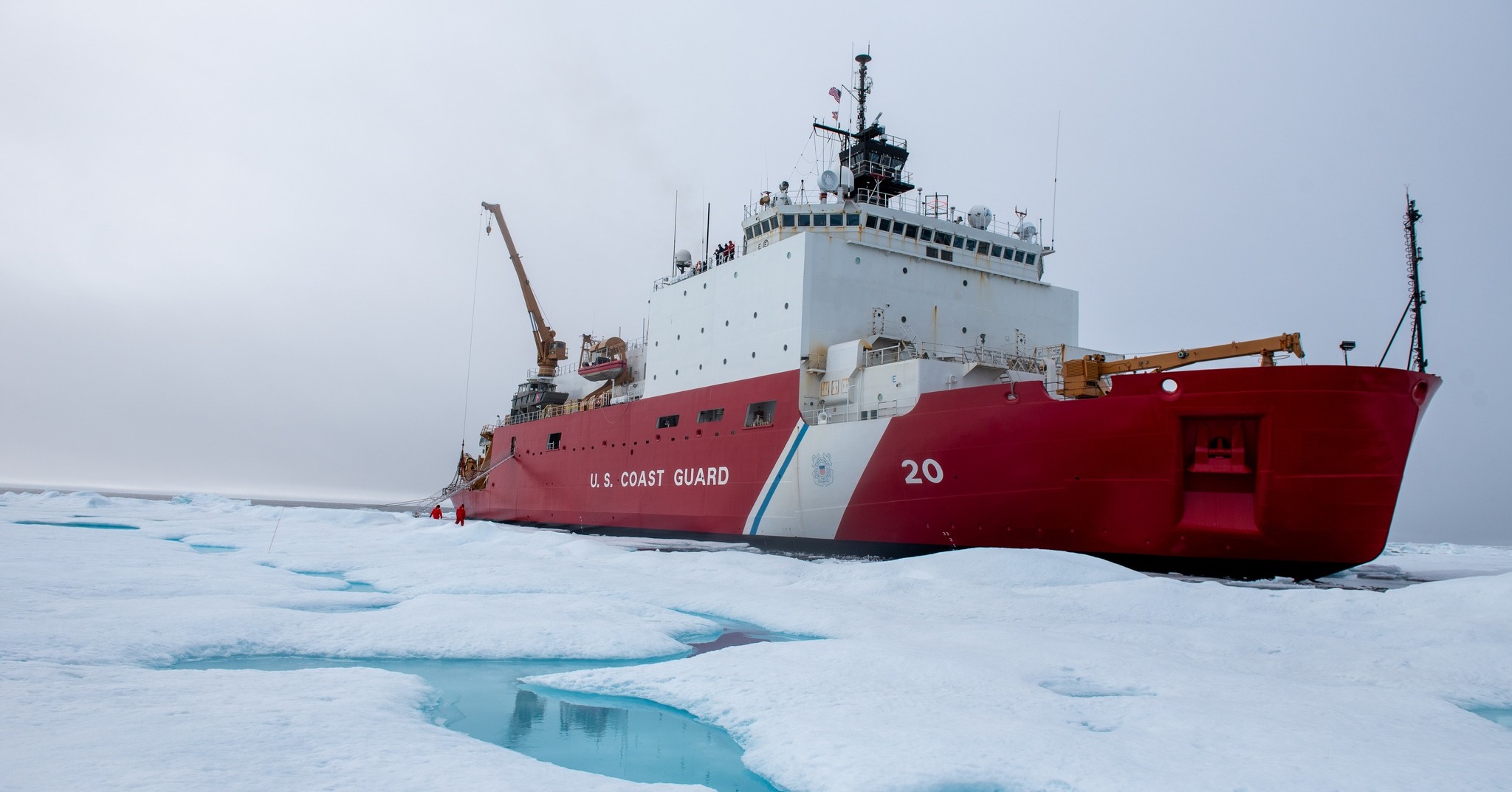
The United States cannot sit idle as Russia creates a nine-dash line of territorial claims over the Arctic, like China aims to do in the Pacific, the Navy’s top commander for the region said Wednesday.
“The United States is not conceding the Arctic” to Moscow or Beijing, Adm. Daryl Caudle said at a meeting of the American Society of Naval Engineers. He added that the “vast frontier” of the Arctic “has my utmost attention.”
Caudle, who commands U.S. Fleet Forces, said that means increased American naval presence, having infrastructure in place for sustainable operations, regionally and strengthening cooperation and collaboration with Arctic allies. He noted that six of the eight members of the Arctic Council are NATO allies. Sweden will become the seventh after its formal admission to the alliance.
“The Arctic basin is full of competition” beyond controlling sea lines of communications, he said. The region holds 13 percent of the world’s undiscovered petroleum reserves and 30 percent of undiscovered natural gas, according to the 2012 U.S. Geological Survey.
The warming of the Arctic means there are more opportunities to mine minerals like palladium, cobalt and nickel that are required in high-technology industries. Caudle estimated that there is $1 trillion worth of minerals in the region. That has drawn international attention, especially from Beijing, and “created more human activity in the region,” he said.
China, declaring itself a “near-Arctic nation,” is building three icebreakers to facilitate its use of the Northern Sea Route for commercial shipping but also to broaden its economic ties to Russia on energy and mining, Caudle said. He noted that the United States has two icebreakers, built in the 1970s.
Russia is following a policy of being “first to market” by asserting extended territorial claims over waterways that are increasingly open to maritime traffic, he said. In practice, that means the Kremlin has asserted its right to monitor shipping in what are considered international waters.

The Arctic has also become increasingly militarized in recent years. Caudle pointed to Russia’s stationing of long-range cruise missiles that are capable of striking Canadian and United States targets, its bombers testing the northern approaches’ defenses and stationing a cruise-missile firing submarine on its Pacific coast.
“To be frank, their rhetoric has increased” since the invasion of Ukraine two years ago, Caudle said. The U.S. Navy “must operate more assertively” to keep the Arctic open to all nations. Caudle, a career submarine officer, said that means having ice-strengthened surface ships present, as he urged industry to build warships that can operate “in a very challenging environment.” Key capabilities the U.S. must improve on its ships for Arctic duty include communications and navigation.
“Realistic, high-end training,” like Operation Ice Camp 2024 underway now, “must ramp up today.” He welcomed the presence of Canadian, Japanese and British forces, as well as civilians from the Pentagon’s Defense Advanced Research Projects Agency and MIT’s Lincoln Laboratories, at this year’s camp.
“We need more partners to join us” in exercises like Ice Camp and Operation Nanook for surface ships, he said.
During those exercises, the countries are able to build interoperability, “keeping everyone on the same page,” he said. They also build proficiency in operating in such a different environment. Caudle pointed to U.S. Army Special Forces training in conjunction with Ice Camp and Marines training in Norway as examples.
Infrastructure investments must go beyond making Nome, Alaska, a deep water port that can handle U.S. Navy and Coast Guard ships, as well as large commercial vessels. The region needs more ports and airfields, not only for military operations but also for civilian use – particularly in emergencies, Caudle argued.
Ports and airfields “are critical for naval forces to project power,” he said. The Navy cannot rely “solely on nuclear-powered subs” to show presence. “Surface ships need to get gas and supplies somewhere.”
“We have to put our money where our mouth is,” Caudle said, adding that in the past, the U.S. has not invested money for continued Arctic sustainability.
Using allies such as Canada, Iceland and Greenland for basing options would also boost American naval presence and enhance deterrence, he said.





